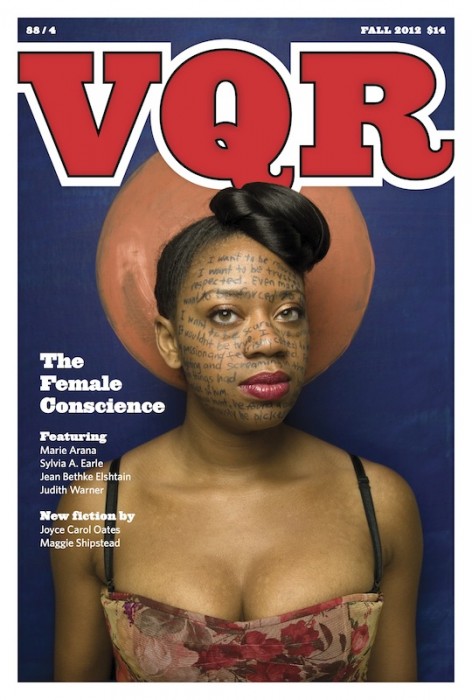
The State of American Poetry
Our Spring 2012 issue focuses on contemporary American poetry—not to proclaim it as some forlorn bulwark against dumbed-down public discourse (as Ted Genoways writes in his editor’s note), but as evidence of what a few well-rendered lines can still accomplish. Ted writes:
The essays examining our nation’s lyrics show both the expansiveness of our literature and the microcosms it can inhabit. The poems attest to the health and diversity of our voices and styles, how we as a culture have come to simultaneously honor tradition and value improvisation.
You can browse the issue’s table of contents for yourself—and read most of it here online—but below I’ve pulled out a few items to help introduce you to the issue.
The Art of the Rhymed Insult by David Caplan
In Caplan’s introduction to the piece, he writes, “Insult flourishes in rhyming cultures, whether in nonliterary venues such as Turkish boys’ rhyming duels and American playgrounds, or particular literary eras.” But it’s next to impossible to find contemporary poets who write insult verse. If poetry of bad personal feeling (or insult) is central to the art, as Robert Pinsky claimed, then Caplan says hip-hop artists, not contemporary poets, claim the center: “In one of its great strengths, insult rhyme need not explain; it insinuates, calling to mind unsavory associations without fully acknowledging them.” Click here to read Caplan’s essay.
Elizabeth Bishop at Summer Camp by William Logan
Bishop spent her teenage summers at Camp Chequesset at Cape Cod, where campers were told to buy a small looseleaf camp notebook to be carried in their pocket or attached to a belt. Bishop possessed such a notebook and used it for letters to friends and to draft some of her earliest poems. Logan writes, “Even when her poems were still mired in a twenties version of the poetic, her literary intelligence had begun to emerge in letters. Bishop’s letters at fourteen and fifteen don’t linger over description but occasionally create a scene or an atmosphere that rises, often too ‘poetically,’ above the details.” Click here to read Logan’s essay.
The Subjective Briar Patch: Contemporary American Poetry by Honorée Fannone Jeffers
It’s best just to directly quote Jeffers’ opening, because it’s hard to stop reading once you start: “What does it matter if the faces of contemporary American poets are different colors if ultimately the writers of the ‘best’ poetry in American literature—the Modernists—are all white and overwhelmingly male? If a poet cannot make her literary god in a subjective image, how can someone who isn’t white or male pray at a poetry altar of her own making? The answer is: she can’t.” Click here to read Jeffers’ compelling essay.
Has Poetry Changed? The View From the Editor’s Desk by Willard Spiegelman
My favorite anecdote in this excellent essay from Spiegelman concerns his response to a writer while speaking on a writing conference panel:
One earnest woman raised her hand. “Don’t you think that the Internet is a wonderful thing, because it allows more voices to be heard?” she asked hopefully.
“Not at all,” I shot back. First of all, there are too many voices. Dr. Johnson complained more than two centuries ago that more people were writing than reading. And, besides, I retorted, “How much time do you spend reading the work of other poets you find on websites, rather than reading your own postings there?” She sat down, saddened and abashed. I did not mean to offend, but rather to make some obvious points.
Those essays, plus much more (including more than 30 poems) await you in the Spring 2012 issue.


